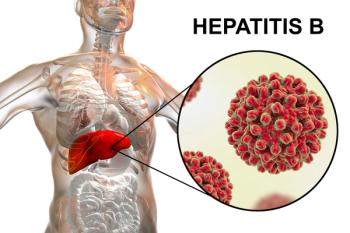
New York moves to e-prescribing for all Rxs
Paper is about to become history in one of the largest prescription drug markets in the country.
Pharmacists across New York are processing some of their last paper prescriptions. As of March 27, all Rxs filled by New York pharmacists must be electronic, including those for controlled substances. With a few minor exceptions, paper is about to become history in one of the largest Rx markets in the country.
“Mandatory electronic prescribing is a bigger change for prescribers than it is for pharmacists and pharmacies,” said Tracy Russell, executive director of the Pharmacists Society of the State of New York. “Pharmacies will have to adjust their internal workflow to accept the vast majority of their prescriptions electronically, but that’s the only major change from the pharmacy side.”
The change isn’t so simple for prescribers.
“Many prescribers are comfortable with electronic scripts, but the technology has not been there for electronic prescribing of controlled substances, or EPCS,” said Sean Kelly, MD, emergency physician at Beth Israel Deaconess Medical Center in Boston and chief medical officer for provider technology firm Imprivata. “Most prescribers in New York have been using electronic systems for most of their prescriptions and writing paper scripts for controlled substances. The New York mandate for EPCS will lead to other states taking the same step.”
A matter of public health
The switch from paper to EPCS is a matter of public health and safety, Kelly continued. New York, like every state, has a growing problem with prescription drug abuse. Paper Rxs make it easy for patients to shop multiple prescribers and pharmacies. Shady prescribers and pharmacies can divert narcotics with little fear of discovery. EPCS provides a direct evidence trail from prescriber to pharmacy, pharmacist, and patient.
“I applaud New York for having the nerve to implement EPCS,” said William Winsley, MS, RPh, former president of the National Association of Boards of Pharmacy and former executive director of the Ohio State Board of Pharmacy. “All 49 other states are going to be watching. I expect to see other states follow, but nobody is going to commit until we see how New York goes.”
Tight controls
The New York system is known as I-STOP (Internet System for Tracking Over-Prescribing). I-STOP was created by the state Bureau of Narcotic Enforcement (BNE) to meet all DEA requirements for EPCS.
The primary burden of implementation falls on prescribers and electronic health record vendors, Russell said. Vendors must create systems that meet DEA requirements for certification and authentication of individual prescribers.
Prescribers must be certified for EPCS by BNE and maintain at least two types of authentication.
DEA regulations allow for three types of online authentication: a physical device such as a key fob or card; something that only the prescriber knows such as a password; and individual biometric data such as a retina pattern. Prescribers must use two of the three forms of authentication for EPCS.
Authenticators may not be shared between individuals.
And each EPCS must be sent to a specific pharmacy, chosen by the patient. If that pharmacy cannot fill the script, the prescriber must cancel the original and write a new EPCS for another pharmacy.
Daily report
The filling pharmacy files a daily report with BNE, listing all controlled substance scripts filled. The daily report includes a unique Rx number, prescriber identification, patient information, and controlled substances dispensed. If the patient presents a paper prescription for a controlled substance, the pharmacy can fill it but must note the nonstandard Rx in its BNE report.
The agency can take action against prescribers who fail to use EPCS.
“New York has forced vendors to create a system that works,” Kelly said. “It is painful to be a prescriber in New York right now, but other states will benefit from New York’s experience. With this system up and running, other states will be able to consider their own laws in a different light, because the necessary technology will already be in place.”
Newsletter
Pharmacy practice is always changing. Stay ahead of the curve with the Drug Topics newsletter and get the latest drug information, industry trends, and patient care tips.











































































































































































































